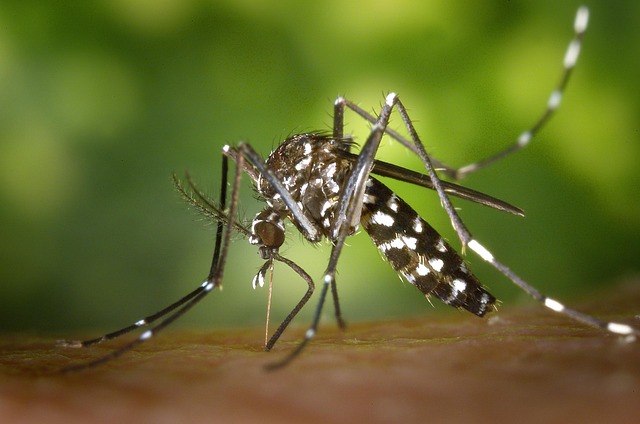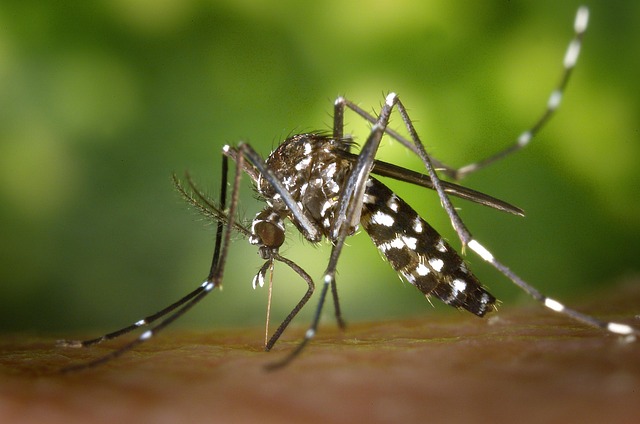Mosquito barriers are essential for effective mosquito control, employing physical (screens, drains), chemical (insecticides, repellents), and innovative (electric zappers, ultrasound) methods. Professional services tailor strategies based on location, water sources, and vegetation to reduce populations and prevent insect-borne diseases. Targeting high-risk areas, using larvicides & adulticides strategically, and adopting eco-friendly alternatives like traps & natural repellents contribute to sustainable mosquito control. Modern approaches focusing on integrated pest management (IPM) blend diverse methods for maximum effectiveness while minimizing environmental harm. Safety protocols are paramount during barrier treatments, prioritizing public health & environmental stewardship.
Mosquitoes are a persistent nuisance, but they also pose health risks with diseases like Zika and West Nile. Effective mosquito control is crucial for outdoor enjoyment and public health. This article explores comprehensive mosquito barrier services as a solution. From understanding barrier types and their benefits to identifying high-risk areas and choosing the right repellent solutions, we provide an overview of effective control methods. We also discuss sustainable strategies and essential health considerations for safe, long-lasting mosquito control.
Understanding Mosquito Barriers: An Overview of Effective Control Methods

Mosquito barriers are an integral part of mosquito control, offering effective solutions for managing and reducing mosquito populations in various settings. These barriers can take on different forms, from physical structures to chemical applications, each designed to disrupt mosquito breeding grounds and limit their access to potential hosts. Understanding the principles behind these methods is crucial in implementing successful mosquito control strategies.
Physical barriers, such as screens, nets, and drains, physically prevent mosquitoes from reaching their targets. Chemical barriers, on the other hand, employ insecticides or repellents to deter mosquitoes. Targeted applications of these substances around homes, in gardens, or in public spaces can significantly reduce mosquito activity. Modern innovations include advanced technologies like electric zappers and ultrasound devices, although their effectiveness remains a topic of debate within the scientific community. The key to successful mosquito control lies in combining these methods with proper sanitation practices, regular removal of standing water, and community-wide participation in maintaining these barriers.
The Benefits of Professional Mosquito Barrier Services

Professional mosquito barrier services offer a multitude of benefits, significantly enhancing outdoor living and overall well-being. One of the primary advantages is their effectiveness in mosquito control. Trained specialists employ advanced techniques and environmentally friendly products to create protective barriers around homes, businesses, or events, ensuring a substantial reduction in mosquito populations. This not only provides immediate relief from bites but also prevents the spread of diseases transmitted by these insects.
Moreover, hiring professionals ensures a tailored solution for each unique environment. They consider factors like geographical location, nearby water sources, and vegetation to design targeted strategies. Regular treatments are scheduled, providing long-term protection and peace of mind. This proactive approach to mosquito control is particularly beneficial for areas with high insect activity, ensuring residents and visitors alike can enjoy outdoor spaces without the nuisance and health risks associated with mosquitoes.
Targeted Approaches: Identifying High-Risk Areas for Treatment

Identifying high-risk areas is a crucial step in implementing effective mosquito control strategies. Professional barrier services start by assessing the unique geographical and environmental factors of a location to pinpoint places where mosquitoes breed and thrive. These could include standing water, dense vegetation, or areas with poor drainage—all habitats that encourage mosquito populations. By focusing on these high-risk zones, treatments can be targeted more precisely, ensuring resources are used efficiently.
This strategic approach allows for the application of appropriate control measures in the right places. Whether it’s through larvicide applications to disrupt breeding cycles or adulticide sprays to reduce active mosquito counts, treating problem areas directly leads to better results in mosquito control efforts.
Common Mosquito Repellent Solutions and Their Applications

Mosquitoes are a universal pest, and effective mosquito control is essential for many environments. Traditional methods include chemical sprays, which can be effective but come with potential health risks and environmental concerns. Alternative solutions like mosquito traps use CO2 and light to attract and capture mosquitoes, offering a safer indoor option. Natural repellents such as citronella candles or plants like lavender and marigolds are popular for outdoor settings, providing a more eco-friendly Mosquito control approach.
For larger areas, barrier treatments involve applying repellent chemicals along property lines or around structures. This method creates a protective zone, ideal for outdoor events or maintaining a mosquito-free backyard. With evolving technology, ultrasonic devices and fan systems that emit sound or air currents to disorient mosquitoes are also available. Each solution has its strengths, catering to specific needs, be it indoor comfort, outdoor entertainment, or large-scale protection, ensuring a more sustainable and safer environment for all.
Implementing Long-Lasting Strategies for Sustainable Mosquito Control

Implementing long-lasting strategies is key to achieving sustainable mosquito control, a critical aspect of public health and outdoor living. Gone are the days when reactive, short-term solutions were adequate. Modern mosquito barrier services focus on integrated pest management (IPM), combining various methods for optimal results. This includes targeting breeding grounds, applying strategic treatments, and utilizing natural predators while minimizing environmental impact. By adopting these holistic practices, communities can significantly reduce mosquito populations and create a healthier, more enjoyable outdoor environment.
Sustainable control measures not only benefit residents but also preserve ecosystems. For instance, using environmentally friendly chemicals and biological agents helps maintain biodiversity, ensuring a balanced ecosystem. Moreover, long-term strategies often prove cost-effective, saving money in the long run by preventing widespread mosquito-borne disease outbreaks that require extensive medical interventions.
Health and Safety Considerations in Mosquito Barrier Installation

When installing mosquito barriers, health and safety should be paramount. These measures are essential for both the professionals handling the equipment and the surrounding population. Proper protective gear, including gloves, masks, and eye protection, is crucial to prevent direct contact with potential harmful chemicals used in barrier treatments. Additionally, ensuring adequate ventilation during application is vital to minimize exposure to any airborne substances.
Regular maintenance of mosquito control barriers is equally important. This includes inspecting for damage or wear, replacing defective components promptly, and adhering to environmental safety guidelines for disposal of used materials. By prioritizing these health and safety considerations, mosquito barrier services can effectively mitigate vector-borne disease risks while safeguarding public well-being.
